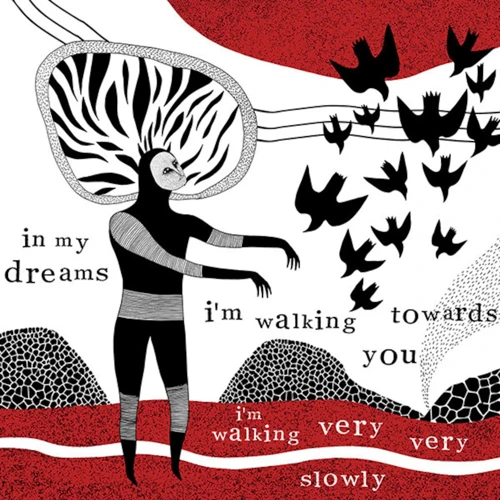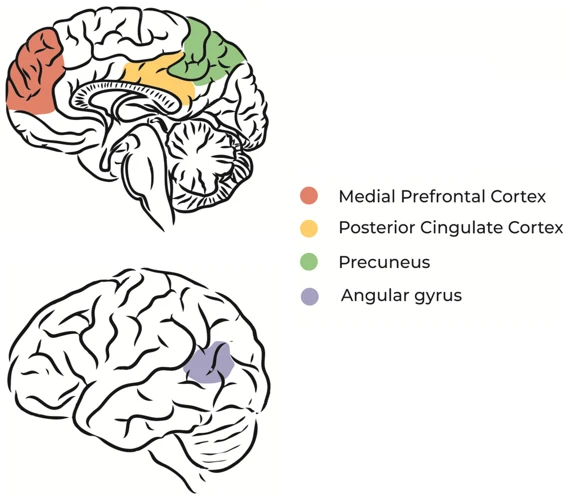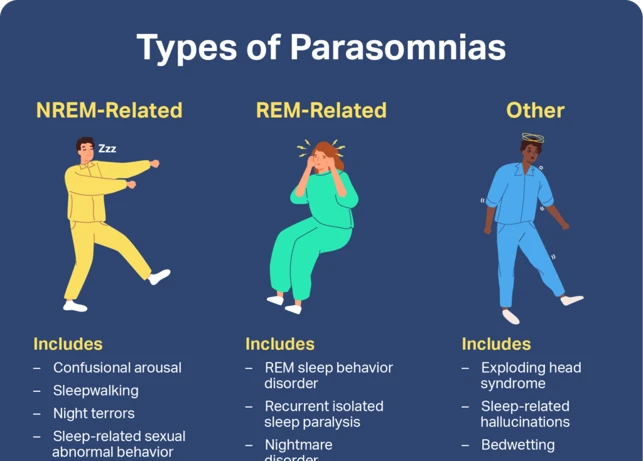Sleepwalking and dreaming both involve the mysterious realm of sleep, but what exactly is the relationship between these two nocturnal phenomena? Many people have wondered if sleepwalking is simply acting out dreams or if there is a deeper connection between the two. In this article, we will delve into the intricacies of sleepwalking and dreaming, exploring their definitions, causes, and symptoms. We will also examine the purpose of dreams, the different stages of sleep, and the various types of dreams that occur. Additionally, we will uncover the findings of research studies that shed light on the relationship between sleepwalking and dreaming. Lastly, we will address common misconceptions and provide tips for managing sleepwalking episodes and enhancing dream quality. So, prepare to enter the enigmatic world of sleep as we unravel the fascinating ties between sleepwalking and dreaming.
Understanding Sleepwalking

Sleepwalking is a mysterious sleep disorder that affects a significant number of individuals. Sleepwalking, also known as somnambulism, refers to the act of walking or performing other complex behaviors while still in a deep sleep state. The exact causes of sleepwalking are not fully understood, but factors such as genetics, medications, sleep deprivation, and certain medical conditions can contribute to its occurrence. Common symptoms of sleepwalking include sitting up in bed, walking around the house, talking or mumbling, and performing routine tasks with little to no awareness. However, despite its name, sleepwalking is not directly linked to dreaming. While some sleepwalkers may recall fragments of dreams upon awakening, there is often no direct correlation between the content of the dream and the sleepwalking episode itself. To learn more about how sleepwalking intersects with dreaming, continue reading the next section.
Definition of Sleepwalking
Sleepwalking, also known as somnambulism, is a parasomnia disorder characterized by engaging in complex behaviors while in a deep sleep state. The basic definition of sleepwalking involves walking or moving around during sleep, often with a blank expression and a lack of awareness of surroundings. Sleepwalkers may appear to be awake, with their eyes open and even performing activities such as dressing, eating, or rearranging objects, but their actions are unconscious and lacking purpose. Sleepwalking episodes typically occur in the early part of the night during the deeper stages of non-rapid eye movement sleep (NREM). A sleepwalker may arise from bed and navigate their environment with little coordination or response to external stimuli. Additionally, it’s not uncommon for sleepwalkers to have difficulty being awakened or to have no memory of their sleepwalking episode upon awakening. While sleepwalking can occur in people of all ages, it is more prevalent in children and tends to decrease in frequency as individuals grow older. It is important to note that sleepwalking is not the same as acting out dreams, as the content and actions in dreams are not consciously experienced or controlled during sleepwalking episodes. To learn more about the relationship between sleepwalking and dreaming, proceed to the next section. [1]
Causes of Sleepwalking
The precise causes of sleepwalking are still not fully understood, but several factors have been identified as possible contributors to this enigmatic phenomenon. Let’s explore some of the most common causes:
1. Genetics: Family history plays a significant role in sleepwalking tendencies. Research suggests that if one or both parents have a history of sleepwalking, their children are more likely to experience it as well.
2. Sleep Deprivation: Lack of quality sleep and inadequate rest can increase the likelihood of sleepwalking episodes. Fatigue and irregular sleep patterns disrupt the normal sleep cycle and can trigger sleepwalking behaviors.
3. Medical Conditions: Certain medical conditions, such as obstructive sleep apnea, restless legs syndrome, and gastroesophageal reflux disease (GERD), have been linked to an increased risk of sleepwalking. These conditions disrupt sleep patterns and can contribute to sleepwalking episodes.
4. Medications and Substances: Certain medications, including sedatives, hypnotics, and some antidepressants, have been associated with sleepwalking. Additionally, the use of alcohol and recreational drugs can increase the likelihood of sleepwalking episodes.
5. Irregular Sleep-Wake Schedule: Consistently irregular sleep patterns, such as frequently changing work shifts or jet lag from traveling across time zones, can disrupt the internal body clock. This disruption can trigger sleepwalking behaviors.
It is important to note that the causes of sleepwalking can vary from person to person. Some individuals may experience sleepwalking due to a combination of these factors, while others may have different underlying causes. Understanding the potential causes of sleepwalking is essential for developing effective management strategies and seeking appropriate medical advice if necessary. To learn more about the impact of sleepwalking on dream quality, click here.
Common Symptoms of Sleepwalking
Common symptoms of sleepwalking can vary in their intensity and duration. Individuals who experience sleepwalking may exhibit a range of behaviors while still in a deep sleep state. These behaviors can include sitting up in bed, opening and closing doors, walking around the house, or even leaving the residence altogether. Sleepwalkers might also engage in activities that they would normally do while awake, such as eating, talking, or tidying up. However, it’s important to note that sleepwalkers typically have little to no awareness of their actions and may not remember the episode upon awakening. During a sleepwalking episode, individuals usually appear dazed or glassy-eyed and have limited responsiveness to external stimuli. It is not uncommon for sleepwalkers to mumble or talk incoherently during the episode. While sleepwalking itself may not be physically dangerous, individuals can potentially harm themselves, particularly if they encounter obstacles or navigate hazardous environments. It is crucial for the safety of sleepwalkers that their surroundings are kept free of potential hazards, such as sharp objects or stairs. To learn more about the relationship between sleepwalking and dreams, you can continue reading the next section of this article.
Exploring Dreams

Dreams have long fascinated human beings, as they offer a doorway to an alternate reality within the realm of sleep. Dreams are a series of images, emotions, and thoughts that occur involuntarily in the mind during certain stages of sleep. While the exact purpose of dreaming is still debated among scientists and psychologists, there are several theories regarding their significance. One prevalent belief is that dreams serve as a way for the brain to process emotions, memories, and experiences from daily life, helping consolidate and integrate new information. Dreams occur during different stages of sleep, with the most vivid and memorable dreams usually happening during rapid eye movement (REM) sleep. REM sleep is characterized by increased brain activity and rapid eye movements. There are various types of dreams, ranging from symbolic dreams that convey hidden meanings to lucid dreams where individuals become aware that they are dreaming and can exert some control over the dream. To explore the fascinating connection between dreams and sleepwalking, continue reading the next section.
Definition and Purpose of Dreams
Dreams have long been a subject of fascination and intrigue, with their elusive nature and the multitude of theories surrounding them. Dreams are a series of images, emotions, and thoughts that occur in the mind during sleep. They often feel vivid and sensory, transporting individuals into a different reality or alternate world. While the exact purpose of dreams is still a topic of debate among scientists and psychologists, several theories have emerged to explain their significance. One theory suggests that dreams serve as a way for the brain to process and consolidate information from the day, helping with memory and learning. Dreams may also serve as a means of problem-solving, as the mind explores various scenarios and possibilities during sleep. Additionally, dreams can provide a platform for emotional processing, allowing individuals to process and confront unresolved feelings or experiences. The content of dreams can vary widely, ranging from mundane everyday occurrences to surreal and fantastical adventures. Some dreams may be reflective of an individual’s conscious desires, fears, or anxieties, while others may simply be a result of random brain activity. However, despite the vast array of dream experiences, the exact mechanisms behind why and how dreams occur remain a mystery. To explore how dreams relate to sleepwalking, refer to the next section.
Stages of Sleep and Dreaming
During sleep, our bodies go through different stages that involve unique brainwave patterns and physiological changes. These stages of sleep are classified into two main categories: non-rapid eye movement (NREM) sleep and rapid eye movement (REM) sleep. NREM sleep is further divided into three stages: N1, N2, and N3. N1 is the lightest stage of sleep, while N3, also known as slow-wave sleep or deep sleep, is the deepest stage. It is during N3 that sleepwalking episodes are most likely to occur. During REM sleep, which is characterized by rapid eye movement and heightened brain activity, dreaming predominates. This stage is often associated with vivid and emotionally intense dreams. While sleepwalking typically occurs during N3, it’s important to note that dreams can happen in any stage of sleep. In fact, dreams during NREM sleep tend to be more fragmented and less vivid compared to REM sleep dreams. The intricate relationship between sleep stages and dreaming plays a role in understanding the connection between sleepwalking and dreaming. To explore this relationship further, proceed to the next section.
Types of Dreams
When it comes to dreams, there are various types that individuals can experience during their sleep. These different types of dreams can range from mundane and realistic to bizarre and fantastical. One type of dream is the ordinary dream, which involves everyday experiences, events, and interactions. These dreams often reflect the thoughts, emotions, and memories of the dreamer, providing a way for the brain to process and consolidate daily experiences.
Nightmares, on the other hand, are intense and disturbing dreams that can cause feelings of fear, anxiety, or unease. Nightmares often involve threatening situations and vivid imagery, and they can sometimes be linked to real-life trauma or stress. They can leave a lasting impact on the dreamer, leading to increased heart rate, sweating, and even awakening from sleep.
Lucid dreams are a unique type of dream where the dreamer becomes aware that they are in a dream state. This awareness allows the dreamer to actively participate and manipulate the dream’s storyline. Lucid dreams provide individuals with a sense of control, allowing them to explore their subconscious mind and engage in experiences they might not encounter in reality.
Recurring dreams are dreams that repeat themselves over time, often with similar themes, settings, or events. While their cause is not fully understood, recurring dreams may be linked to unresolved emotions, conflicts, or anxieties in a person’s life. They can serve as a subconscious signal that something needs attention or resolution.
Finally, prophetic dreams are dreams that seemingly predict or foreshadow future events. Some individuals believe that these dreams possess a mystical or supernatural element, while others attribute their occurrence to mere coincidence. Prophetic dreams have fascinated humans throughout history, inspiring interpretations and speculation about their meaning and significance.
Understanding the different types of dreams is crucial in exploring the relationship between sleepwalking and dreaming, as the content and nature of dreams can influence various aspects of sleepwalking episodes. To delve deeper into the connection between sleepwalking and dreaming, continue reading the next section.
The Connection Between Sleepwalking and Dreaming

The connection between sleepwalking and dreaming is a topic that has intrigued researchers and sleep experts for years. While the exact relationship between the two is still not fully understood, there are some intriguing findings researchers have uncovered. Studies have shown that both sleepwalking and dreaming share similar neurological mechanisms and occur during different stages of sleep. This suggests that there may be underlying connections between the two phenomena. However, it is important to note that sleepwalking is not simply acting out dreams. In fact, sleepwalking occurs during deep non-rapid eye movement (NREM) sleep, whereas most dreaming occurs during rapid eye movement (REM) sleep. Despite this distinction, there is evidence to suggest that dream content can impact the occurrence and intensity of sleepwalking episodes. To better comprehend the intriguing link between sleepwalking and dreaming, it is crucial to explore the complex world of sleep and dreams further.
Research Findings on Sleepwalking and Dreaming
Shared Neurological Mechanisms
A deeper understanding of the relationship between sleepwalking and dreaming can be found in the shared neurological mechanisms that underlie both phenomena. Research studies have identified common brain regions and neurotransmitters involved in both sleepwalking and dreaming. The brain areas implicated in sleepwalking include the motor cortex, which controls voluntary movements, and the frontal lobe, responsible for decision-making and complex behaviors. Interestingly, these same regions are also active during the rapid eye movement (REM) stage of sleep when dreaming predominantly occurs. This suggests a potential link between the brain circuits involved in sleepwalking and those responsible for generating dreams.
Furthermore, neurotransmitters such as serotonin and dopamine have been found to play a role in both sleepwalking and dream production. These chemical messengers regulate various brain functions, including sleep-wake cycles and emotional experiences. Imbalances in these neurotransmitters have been associated with sleep disorders and altered dream states.
While the exact mechanisms connecting sleepwalking and dreaming remain elusive, these shared neurological elements provide insight into their potential relationship. Understanding the overlapping brain processes may help unravel the mysteries behind the occurrence of sleepwalking episodes during sleep cycles. To explore further into the phenomenon of sleepwalking and its impact on dream content, refer to the section on how sleepwalking affects dream quality.
Impact of Dreams on Sleepwalking Episodes
The impact of dreams on sleepwalking episodes is a topic that has intrigued researchers and sleep experts alike. While sleepwalking is not directly caused by dreams, there may be some influence of dream content on the behaviors exhibited during a sleepwalking episode. Dreams are complex and multi-dimensional experiences that occur during different stages of sleep, particularly during rapid eye movement (REM) sleep. During REM sleep, the brain is highly active, and vivid dreams commonly occur. It is believed that the content of dreams is influenced by a combination of personal experiences, emotions, and memories. However, the relationship between dream content and sleepwalking is not straightforward. Even though some sleepwalkers may report having dreams that coincide with their sleepwalking episodes, the content of these dreams does not necessarily reflect the body’s actions during sleepwalking. Sleepwalking is thought to stem from a different part of the brain that regulates movement and motor activity, while dreaming originates from the areas of the brain involved in cognition and emotional processing. Hence, the impact of dreams on sleepwalking episodes is still a subject of ongoing research and debate. To learn more about the possible connections between sleepwalking and dreaming, refer to the article ‘The Relationship Between Sleepwalking and Dreaming‘.
Effect of Sleepwalking on Dream Quality
The effect of sleepwalking on dream quality has been a subject of curiosity among researchers and individuals who experience this sleep disorder. While sleepwalking and dreaming are distinct phenomena, they can affect each other in certain ways, particularly when it comes to dream recall and the emotional content of dreams. One potential effect of sleepwalking on dream quality is a disruption in dream recall. Sleepwalkers often have difficulty remembering their dreams, which may be due to the fragmented nature of their sleep and the lack of connectivity between their conscious and unconscious states during the episode. As a result, they may wake up with little to no recollection of their dreams. Another effect of sleepwalking on dream quality is the potential alteration of dream content and emotions. Studies have found that sleepwalkers may experience more negative emotions in their dreams compared to individuals who do not sleepwalk. This could be attributed to the underlying causes of sleepwalking, such as stress, anxiety, or sleep disturbances. In turn, the emotional content of dreams can influence the overall quality of the dream experience. It is important to note that while sleepwalking can impact dream quality, it does not necessarily mean that sleepwalking episodes directly cause specific dreams or vice versa. The relationship between sleepwalking and dream content remains a fascinating area of study, with much more to uncover.
Common Misconceptions

Misconceptions surrounding sleepwalking and its relationship to dreams are prevalent. One common misconception is that sleepwalking involves acting out dreams. However, research has shown that sleepwalking is not typically a direct result of dream content. Sleepwalking occurs during non-rapid eye movement (NREM) sleep, whereas dreams most commonly occur during rapid eye movement (REM) sleep. Another misconception is that sleepwalking can be proven to be related to dreams through studies. While studies have explored the connection between sleepwalking and dreams, conclusive evidence is still lacking. Sleepwalking and dreaming are complex phenomena, and their relationship remains a topic of ongoing research and investigation. It is important to dispel these misconceptions and recognize that sleepwalking and dreaming are separate yet intriguing aspects of the sleep experience.
Sleepwalking as Acting Out Dreams
Sleepwalking is often misunderstood as being the act of acting out dreams. While it is true that both sleepwalking and dreams are associated with the state of sleep, they are not directly linked. Sleepwalking occurs during deep non-REM sleep, while dreaming primarily happens during REM sleep. During deep sleep, the brain is not actively engaged in vivid dream experiences. In fact, sleepwalkers typically experience a lack of dream recall during their episodes.
Although sleepwalking and dreams are separate phenomena, there can be instances where sleepwalking and dreaming occur together. Sleepwalking can sometimes be triggered by dream content, causing the sleepwalker to act out certain behaviors related to the dream. For example, if someone is dreaming of running, they may engage in sleepwalking behavior of actually running in real life. However, this correlation is not always apparent, and it is more common for sleepwalking to involve aimless wandering or simple actions like sitting up in bed.
It is important to note that sleepwalking episodes are typically disjointed and lack the coherence and narrative structure characteristic of dreams. Sleepwalkers often exhibit random and repetitive movements, rather than intentionally acting out a dream storyline. While sleepwalking can occasionally coincide with dream content, it is not accurate to say that sleepwalking is the direct result of acting out dreams. The connection between sleepwalking and dreaming is much more complex and can vary from person to person.
Proving the Relationship through Studies
The relationship between sleepwalking and dreaming has been the subject of numerous studies, aimed at exploring the potential connection between these two phenomena. Researchers have conducted various investigations to understand whether sleepwalking is simply acting out dreams or if there is a more complex relationship at play. One study published in the journal Sleep examined the brain activity of sleepwalkers during different sleep stages using electroencephalography (EEG). The findings revealed that sleepwalkers experienced distinct patterns of brain activity that were different from non-sleepwalkers, indicating that sleepwalking is a unique physiological state. Another study conducted at the University of Montreal used functional magnetic resonance imaging (fMRI) to observe the brain activity of sleepwalkers during both sleepwalking episodes and dream recall periods. The results showed overlapping brain regions activated during sleepwalking and dreaming, suggesting a neural connection between these two phenomena. Additionally, researchers have found that certain medications that suppress dreaming can also reduce sleepwalking episodes, further supporting the notion of a relationship between the two. While these studies provide valuable insights, it is important to note that more research is needed to fully understand the intricate relationship between sleepwalking and dreaming. So, while studies have made significant strides in establishing a link, there is still much to uncover about this intriguing connection.
Tips for Managing Sleepwalking and Dreams
Managing sleepwalking episodes and dreams can be challenging, but there are strategies that can help individuals minimize their impact and enhance overall sleep quality. Creating a sleep-friendly environment is crucial, as it helps promote a restful night’s sleep and reduces the risk of sleepwalking. This includes keeping the bedroom dark, quiet, and cool, as well as establishing a consistent bedtime routine. Practicing good sleep hygiene is also essential, which involves maintaining a regular sleep schedule, avoiding stimulants like caffeine before bed, and engaging in relaxation techniques such as meditation or deep breathing. If sleepwalking becomes a persistent problem and significantly affects daily life, seeking professional help from a sleep specialist or therapist specializing in sleep disorders may be beneficial. They can provide guidance, conduct evaluations, and recommend appropriate treatment options to manage sleepwalking and improve sleep quality. Remember, managing sleepwalking and dreams requires a comprehensive approach, and with the right strategies in place, individuals can experience better sleep and potentially reduce the frequency of sleepwalking episodes.
Creating a Sleep-Friendly Environment
Creating a sleep-friendly environment is essential for managing sleepwalking episodes and promoting overall quality of sleep. Here are some tips to make your environment conducive to a restful night:
1. Darken the Room: Keep your bedroom as dark as possible by using blackout curtains or blinds, or wearing an eye mask. Darkness helps signal to your brain that it’s time to sleep.
2. Reduce Noise: Minimize external noises that can disrupt your sleep. Consider using earplugs or a white noise machine to block out sounds that may trigger sleepwalking episodes.
3. Safe Sleep Setup: Remove any potential hazards from your sleep area. Ensure that the floor is clear of obstacles, keep furniture away from the bed, and secure windows and doors to prevent accidental falls or wandering during sleepwalking.
4. Comfortable Temperature: Maintain a cool temperature in your bedroom for optimal sleep. Avoid excessively warm or cold environments that can disturb your sleep and increase the likelihood of sleepwalking.
5. Establish a Consistent Routine: Stick to a regular sleep schedule by going to bed and waking up at the same time every day. A consistent routine helps regulate your body’s internal clock and promotes better sleep quality.
6. Manage Stress: Implement stress-reduction techniques before bed, such as meditation, deep breathing exercises, or engaging in a relaxing bedtime routine. High stress levels can contribute to sleep disturbances, including sleepwalking.
7. Avoid Stimulants: Limit your consumption of caffeine, nicotine, and alcohol, especially close to bedtime. These substances can disrupt your sleep patterns and increase the chances of sleepwalking episodes.
8. Create a Comfortable Sleep Environment: Invest in a comfortable mattress, pillows, and bedding that provide proper support and allow for restful sleep. Experiment with different sleep positions to find the most comfortable one for you.
Remember, creating a sleep-friendly environment is a crucial step in managing sleepwalking and improving overall sleep quality. By implementing these tips, you can create a safe and calming atmosphere that promotes uninterrupted sleep and reduces the likelihood of sleepwalking episodes.
Practicing Good Sleep Hygiene
Practicing good sleep hygiene is essential for managing both sleepwalking and dreams. Here are some tips to improve sleep hygiene and promote better sleep quality. Firstly, establish a consistent sleep schedule by going to bed and waking up at the same time every day, even on weekends. This helps regulate your body’s internal clock and promotes a more regular sleep pattern. Secondly, create a sleep-friendly environment by keeping your bedroom cool, dark, and quiet. Consider using earplugs, eye masks, or white noise machines to block out any disruptive sounds or light. Additionally, make sure your mattress and pillows are comfortable and supportive. Another important aspect of good sleep hygiene is engaging in relaxation techniques before bedtime. This can include activities such as taking a warm bath, practicing deep breathing exercises, or listening to calming music. It’s also advisable to avoid stimulating activities, such as vigorous exercise or consuming caffeine, alcohol, and heavy meals close to bedtime. Instead, opt for a light snack if needed. Finally, establish a bedtime routine that allows you to wind down and signal to your body that it’s time to sleep. This can include reading a book, practicing meditation, or doing gentle stretches. By incorporating these sleep hygiene practices into your daily routine, you can create an optimal sleep environment and improve your chances of having restful nights with fewer sleepwalking episodes and more fulfilling dreams.
Seeking Professional Help
Seeking professional help is crucial for individuals experiencing frequent or severe episodes of sleepwalking or for those whose sleepwalking significantly impacts their daily functioning and well-being. A healthcare professional, such as a sleep specialist or a neurologist, can provide a comprehensive evaluation and diagnosis, ruling out any underlying medical conditions or sleep disorders that may contribute to sleepwalking. Based on the individual’s specific situation, the healthcare professional may recommend various treatment options. Medication such as Klonopin or Trazodone, can be prescribed to help manage sleepwalking episodes by promoting deeper sleep and reducing arousal during the night. Behavioral therapies, such as hypnosis or cognitive-behavioral therapy, may be employed to address any underlying psychological factors contributing to sleepwalking. Additionally, lifestyle modifications, such as implementing relaxing bedtime routines, maintaining a consistent sleep schedule, and creating a sleep-friendly environment, can significantly reduce sleepwalking occurrences. It is important to remember that seeking professional help not only helps in managing sleepwalking but also facilitates a better understanding of the condition and its impact on overall sleep quality.
Conclusion
In conclusion, the relationship between sleepwalking and dreaming remains complex and multifaceted. While sleepwalking and dreaming are both sleep-related phenomena, they are not directly intertwined. Sleepwalking, also known as somnambulism, involves performing complex behaviors while in a deep sleep state, while dreaming occurs during the rapid eye movement (REM) stage of sleep. The two processes have distinct characteristics and mechanisms.
Research findings suggest that sleepwalking and dreaming share some common neurological mechanisms, such as inhibition of motor control during REM sleep. However, the impact of dreams on sleepwalking episodes is still not fully understood. While some sleepwalkers may recall fragments of dreams, it is often challenging to establish a direct link between dream content and sleepwalking behavior.
It is important to dispel the misconception that sleepwalking is simply acting out dreams. Sleepwalking is a sleep disorder with its own distinct causes and symptoms. Acting out dreams, on the other hand, is more closely associated with REM sleep behavior disorder (RBD).
To effectively manage sleepwalking episodes and enhance dream quality, individuals are encouraged to create a sleep-friendly environment, practice good sleep hygiene, and seek professional help if needed. By prioritizing sleep and addressing any underlying sleep disorders or disturbances, individuals can improve their overall sleep quality and reduce the frequency of sleepwalking episodes.
In conclusion, while sleepwalking and dreaming are fascinating facets of the sleep experience, they are not directly interdependent. Further research is needed to unravel the intricacies of their relationship and the impact they have on each other. As our understanding of sleep continues to evolve, we gain valuable insights into the complexities of the human brain during restful slumber.
Frequently Asked Questions
What triggers sleepwalking?
Sleepwalking can be triggered by various factors such as sleep deprivation, certain medications, alcohol consumption, stress, fever, and underlying medical conditions like sleep apnea or restless leg syndrome.
At what age does sleepwalking usually start?
Sleepwalking typically starts in childhood, usually between the ages of 4 and 8. However, it can occur at any age and may persist into adulthood.
Can sleepwalking be dangerous?
Yes, sleepwalking can pose certain dangers. Sleepwalkers may stumble, fall, or injure themselves during episodes. They could also accidentally engage in potentially harmful activities such as leaving the house or handling sharp objects. Creating a safe sleep environment is essential for anyone prone to sleepwalking.
Is sleepwalking inherited?
There is evidence to suggest that sleepwalking can have a genetic component. If one or both parents have a history of sleepwalking, their children may be more likely to experience it as well.
Can sleepwalking be treated?
Yes, sleepwalking can be managed and treated. Implementing good sleep hygiene practices, creating a consistent sleep schedule, and managing underlying health conditions can help reduce the frequency and severity of sleepwalking episodes. In severe cases, a sleep specialist may recommend certain medications.
What is the purpose of dreams?
The purpose of dreams is still a topic of scientific debate. Some theories suggest that dreams serve to process emotions, consolidate memories, and promote problem-solving. They may also play a role in regulating mood and psychological well-being.
Do we dream during all stages of sleep?
Dreams primarily occur during the rapid eye movement (REM) stage of sleep, which is characterized by vivid, story-like dreams. However, dreams can also occur during other stages of sleep, although they are often less vivid and memorable.
What are lucid dreams?
Lucid dreams are dreams in which the dreamer is aware that they are dreaming. This awareness allows individuals to exert some control or influence over the dream content and storyline.
Can dreams affect our waking life?
Yes, dreams can have an impact on our waking life. Dreams can influence our emotions, thoughts, and even creativity. They may also provide insights into unresolved issues or concerns, allowing us to gain a deeper understanding of ourselves.
Is it possible to act out dreams while sleepwalking?
While sleepwalking and certain dream actions may seem similar, they are distinct phenomena. Sleepwalking is not simply acting out dreams. Sleepwalkers usually engage in purposeless behaviors that are not directly linked to the content of their dreams.








